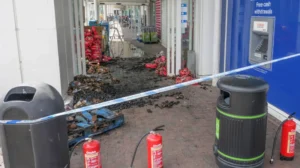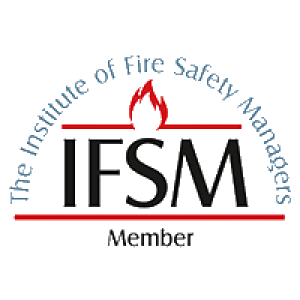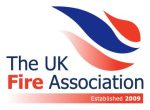Industry professionals welcome publication of BS 8674:2025 as ‘significant step forward’ in building safety
The British Standards Institution has published a groundbreaking new framework designed to professionalise fire risk assessment across the UK’s built environment, following years of regulatory upheaval in the wake of the Grenfell Tower tragedy.
BS 8674:2025, released yesterday, establishes the first comprehensive competency framework for individual fire risk assessors, creating three distinct qualification levels to match the complexity and risk profile of different building types.
The new standard arrives at a critical moment for the industry, as recent legislation including the Fire Safety Act 2021 and Building Safety Act 2022 continues to reshape professional requirements.
Government ministers have previously signalled their intention to require independent third-party certification of fire risk assessor competence, making formal regulation of the profession increasingly likely.
Detailed Competency Assessment Framework in BS 8674:2025
BS 8674:2025 provides specific recommendations for assessing individual competence in undertaking general fire risk assessments for life safety purposes in occupied buildings.
The framework specifically covers:
- A competency framework for non-invasive (visual and non-destructive) fire risk assessments
- The interpretation and use of relevant building records and historical fire safety documentation
- Criteria aligned with BS 8670-1:2024 focusing on life safety measures within buildings
- Performance expectations across the three defined levels of competence
Foundation level is appropriate for new entrants to the discipline who are assessing simple, low-risk buildings such as small offices or shops with minimal occupancy.
Intermediate level is aimed at assessors tasked with looking at buildings of moderate complexity and broader usage types including public venues or mid-rise residential properties.
Advanced level is intended for highly experienced professionals working on high-risk and complex environments such as large residential tower blocks, care facilities and public entertainment venues.
Legal Compliance Drive
The standard directly supports compliance with the Building Safety Act 2022, which mandates that individuals appointed to carry out fire risk assessments must be demonstrably competent. Until now, proving such competence has relied heavily on subjective judgement and inconsistent criteria.
“The introduction of BS 8674:2025 marks a significant step forward in the collective effort to make buildings safer for residents,” said Alex Norris, Minister for Building Safety and Fire. “By improving safety and accountability, it helps to ensure that a tragedy like Grenfell Tower is never going to be repeated.”
The minister’s comments underscore the political imperative driving these changes.
The Grenfell Tower Public Inquiry highlighted systemic failures in building safety oversight, with competency gaps among professionals cited as a contributing factor to regulatory failures.
Industry Welcomes Standardisation
Professional bodies have welcomed the clarity the new framework provides. Dennis Davis, competence director at the Fire Sector Confederation, described the publication as “a significant achievement for the profession and a vital step in the right direction towards building a safer future.”
The Fire Sector Confederation led the working group that shaped BS 8674, collaborating with regulators, government departments, and industry stakeholders over several years.
This collaborative approach reflects lessons learned from earlier regulatory failures, where insufficient industry input led to impractical requirements.
Comprehensive Stakeholder Framework
BS 8674:2025 Built Environment – Framework for Competence of Individual Fire Risk Assessors – Code of Practice is designed to serve a comprehensive range of stakeholders across the built environment:
- Individual fire risk assessors who need to demonstrate and maintain competence
- ‘Responsible Persons’ under the Regulatory Reform (Fire Safety) Order 2005 and Building Safety Act 2022 who are legally obligated to ensure those whom they appoint to conduct risk assessments are competent to do so
- Employers, duty holders and building owners/managers seeking assurance that assessments are being carried out by qualified professionals
- Certification and accreditation bodies assessing individuals against competency benchmarks
- Training providers and academic institutions developing curricula to prepare assessors for real-world demands
- Professional bodies and trade associations that want to ensure their members meet recognised industry standards
The standard applies across multiple sectors, including the residential and commercial arenas, public venues, care homes, education and healthcare facilities. According to the BSI: “Anywhere that fire safety and building occupancy intersect.”
BS 8674:2025 Scope and Limitations
BS 8674:2025 focuses specifically on non-invasive visual assessments for life safety purposes in occupied buildings.
It deliberately excludes more specialised areas such as fire engineering, invasive inspections, and external wall construction assessments – the latter being covered by the separate PAS 9980 standard.
The framework also applies only to individual competence rather than organisational capability, reflecting the personal liability aspects of recent legislation.
Training providers and academic institutions are expected to align their curricula with the new requirements, potentially reshaping how fire risk assessors are prepared for professional practice.
Market Impact Expected
The standardisation is likely to have significant commercial implications.
Employers, duty holders, and building owners now have objective benchmarks for selecting assessors, potentially disrupting established procurement patterns.
Insurance companies, who have long struggled with inconsistent risk assessment quality, are expected to reference the new standards when evaluating coverage and claims.
This could create market pressures encouraging rapid adoption across the profession.
Certification and accreditation bodies are already developing assessment schemes aligned with BS 8674, suggesting a competitive marketplace for professional verification services.
Professional Development Focus
Beyond immediate compliance benefits, the standard creates structured career pathways for fire risk assessors. Previously, professional development often followed arbitrary routes with limited recognition of accumulated expertise.
The three-tier system provides clear progression milestones, potentially encouraging greater investment in professional development and helping to address capacity constraints that have plagued the sector.
Academic institutions are reviewing their fire safety programmes to ensure alignment with the new competency requirements, whilst professional bodies are updating membership criteria and continuing professional development frameworks.
Regulatory Evolution Continues
BS 8674:2025 represents just one element of ongoing regulatory transformation following high-profile building safety failures. The Government’s broader building safety reform programme continues to evolve, with further professional regulation expected.
Industry observers suggest that mandatory third-party certification of fire risk assessors is likely within the next two to three years, making current voluntary adoption of BS 8674 potentially advantageous for early adopters.
The standard’s publication coincides with increased enforcement activity by local fire authorities, who are increasingly scrutinising the quality of fire risk assessments during inspections.
Implementation Challenges Ahead for BS 8674:2025
Whilst industry leaders have welcomed the framework, practical implementation challenges remain. The existing pool of assessors will need to demonstrate compliance with new requirements, potentially creating short-term capacity constraints.
Smaller assessment firms may struggle with the costs of upgrading qualifications and obtaining certification, potentially consolidating market share amongst larger operators.
Training capacity will need to expand significantly to meet demand, particularly at the intermediate and advanced levels where practical experience requirements are substantial.
Building Confidence in Fire Safety
The ultimate test of BS 8674’s success will be its impact on actual fire safety outcomes. By standardising assessor competence, the framework aims to reduce the variability in fire risk assessment quality that has undermined confidence in the system.
For building residents and users, the changes should provide greater assurance that fire safety assessments are conducted by genuinely qualified professionals with demonstrable expertise.
As Dennis Davis noted, the standard “affords all stakeholders confidence that competence can now be clearly demonstrated against a professional framework for independent verification.”
BS 8674:2025 is available from the British Standards Institution website. The standard will be reviewed periodically to ensure it remains aligned with evolving regulatory requirements and industry best practice.











